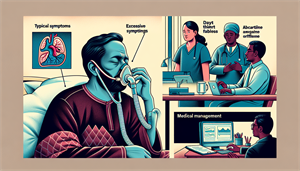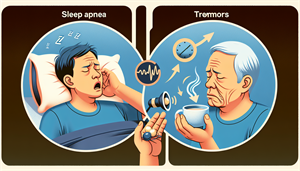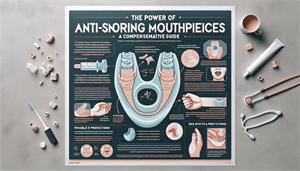
Understanding Sleep Apnea: Symptoms, Risks, and Effective Management Strategies
When it comes to sleep disorders, sleep apnea is a formidable foe. It lurks in the silent hours of the night, stealing breaths and disrupting the peaceful slumber that our bodies need to restore and rejuvenate. But what is sleep apnea, exactly? More importantly, how can one recognize its symptoms, understand its risks, and most crucially, manage it effectively? Let’s dive in.
Key Takeaways
Sleep Apnea is a condition characterized by airway obstruction and communication issues between the brain and muscles. Symptoms include snoring, gasping for air, daytime fatigue, interrupted sleep and mouth breathing in children. Treatment options involve positive airway pressure therapy as well as lifestyle changes such as maintaining a healthy weight to effectively manage symptoms.
Understanding the Two Main Types of Sleep Apnea
Sleep apnea is a type of sleep disorders that occurs when an individual’s breathing is intermittently interrupted during sleep. The two primary classifications of sleep apnea are obstructive sleep apnea and central sleep apnea, each of which has its own distinct causes and symptoms. So, how is sleep apnea diagnosed and treated? It depends on the type and severity of the condition.
Obstructive sleep apnea, the more common of the two, is caused by physical blockage of the airway due to relaxation of the throat muscles during sleep, resulting in disconcerting symptoms like snoring and gasping. On the other hand, central sleep apnea is attributed to a breakdown in communication between the brain and the muscles that control breathing. This leads to slow, shallow breathing, which can range from mild to severe.
Obstructive Sleep Apnea
Obstructive sleep apnea dominates as the most frequently encountered sleep apnea variant, resulting from airway obstruction during sleep. Symptoms like sleep apnea snores and gasping characterize this condition, commonly interrupting sleep and leading to daytime drowsiness. The primary cause of obstructive sleep apnea is the slackening of throat muscles during sleep, narrowing the available space for air circulation.
Obstructive sleep apnea occurs when this results in the narrowing or closure of the airway during inhalation, leading to a reduction in oxygen levels in the bloodstream and intermittent awakenings to reestablish the airway. This cycle may occur 5 to 30 times or more per hour, causing: excessive daytime sleepiness, loud snoring, gasping or choking during sleep, morning headaches, difficulty concentrating, irritability.
If you suspect you have sleep apnea, it is important to consult with a healthcare professional, such as a sleep specialist, to get sleep apnea diagnosed and discuss treatment options.
Central Sleep Apnea
Unlike obstructive sleep apnea, central sleep apnea involves breathing disruptions due to issues with brain-muscle communication. The brain fails to transmit signals to the breathing muscles, leading to slow and shallow breathing during sleep. People dealing with central sleep apnea often experience the following symptoms: waking up gasping for air, struggling to initiate or sustain sleep, waking up frequently during the night, daytime sleepiness and fatigue.
Despite being less common than obstructive sleep apnea, central sleep apnea can range from mild sleep apnea to severe sleep apnea cases and requires proper diagnosis and treatment.
Recognizing the Symptoms of Sleep Apnea
Identifying sleep apnea symptoms is crucial for pursuing the right course of treatment. Nocturnal symptoms include: loud snoring, instances of breathing cessation during sleep, nocturnal awakenings with gasping or choking, waking up with a parched or sore throat. Subtle daytime symptoms of sleep apnea can include: waking up with a dry mouth or scratchy throat, morning headaches, experiencing fatigue, declining performance at work or school, mood changes.


